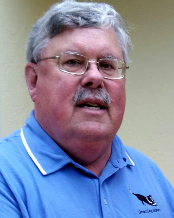
SMART DOG MININGTM
It
takes a smart dog to find hidden treasures
Discrete Event Simulation

In my studies in Industrial Engineering/Operation Research, I became
very interested in Discrete Event simulation (actually I became
interested in simulation back in my undergraduate work, but that is
another story). I was preparing a research proposal on this area,
when for several reasons I decide not to continue at this time
(hence the Masters of Engineering). So that my work would not go to
waste, I have created this site and attached articles to make the
work available to others.
What is Discrete Event Simulation?
In classical thinking there are three types of simulation; discrete
event, continuous, and MonteCarlo. They were articulated by Nance
(1993) as:
Discrete event simulation utilizes a mathematical/logical
model of a physical system that portrays state changes at precise
points in simulated time. Both the nature of the state change and
the time at which the change occurs mandate precise description.
Customers waiting for service, the management of parts inventory or
military combat are typical domains of discrete event simulation.
Continuous simulation uses equational models, often of
physical systems, which do not portray precise time and state
relationships that result in discontinuities. The objective of
studies using such models do not require the explicit representation
of state and time relationships. Examples of such systems are found
in ecological modeling, ballistic reentry, or large scale economic
models.
Monte Carlo simulation, the name given by John van Neumann
and Stanislaw M. Ulam to reflect its gambling similarity, utilizes
models of uncertainty where representation of time is unnecessary.
The term originally attributed to "a situation in which a difficult
non-probabilistic problem is solved through the invention of a
stochastic process that satisfies the relations of the deterministic
problem". A more recent characterization is that Monte Carlo is "the
method of repetitive trials. Typical of Monte Carlo simulation is
the approximation of a definite integral by circumscribing the
region with a known geometric shape, then generating random points
to estimate the area of the region through the proportion of points
falling within the region boundaries.
In current thinking and work these lines are becoming less distinct,
but for this site my emphasis is Nance’s discrete event simulation
(DES). This site will try to present an overview of DES as a tool.
Particular emphasis will be on the use of DES in engineering
decision support.
I have published more information on another site where the following topics are covered in
"Introduction to DES":
Selecting a Simulation and Modeling Language
Evaluating a Simulation and Modeling Package
Using Discrete Event Simulation in Decision Support
What is Hybrid Simulation
I have also include an
Annotated bibliography
and a list of
acronyms that
was used in preparing this site.
I have also included the draft of my research proposal, entitled: “Decision Support in Specialty Chemical Operations: a hybrid simulation based multi-criteria multi-objective optimization system.”
My goal is to eventual complete this research, and I am currently
looking for a doctoral program to pursue it under (advisors/sponsors
sought).

o
40+ years’ experience in the mining industry with strong mineral
processing experience in precious metals, copper, industrial
minerals, coal, and phosphate
o
Operational experience in precious metals, coal, and phosphate plus
in petrochemicals.
o
Extensive experience performing studies and determining feasibility
in the US and international (United States, Canada, Mexico, Ecuador,
Columbia, Venezuela, Chile, China, India, Indonesia, and Greece).
o
E-mail:
info@smartdogmining.com
